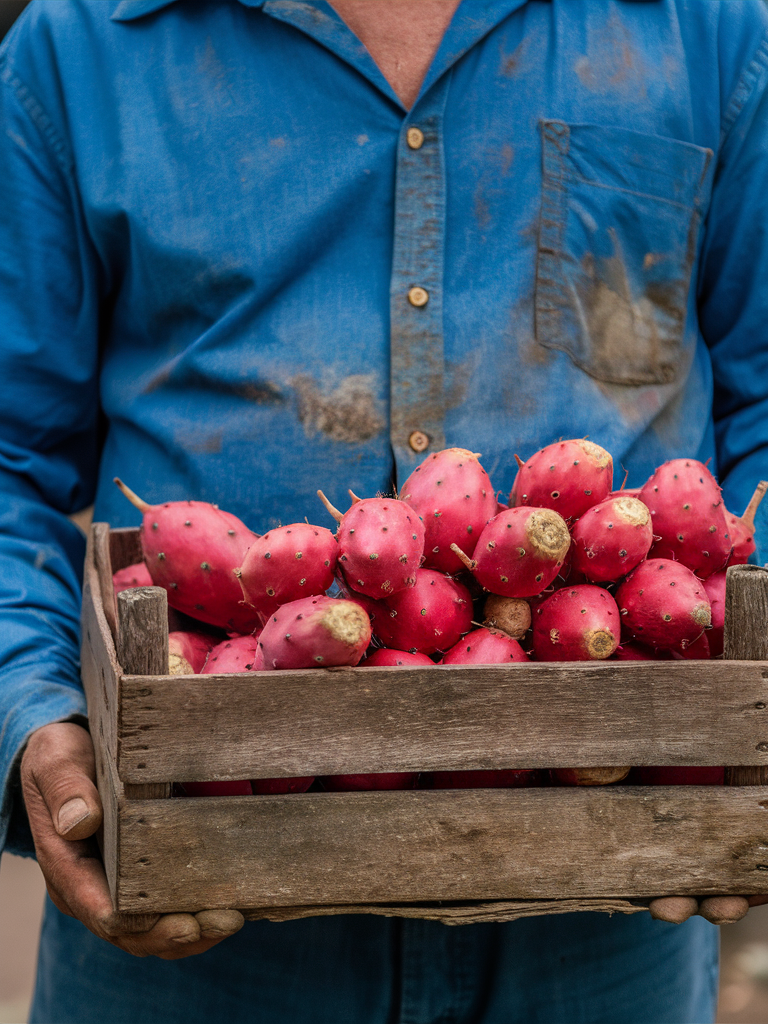
The Opuntia’s Gift: Unpacking the Health Benefits and Cultivation of Prickly Pear.
The prickly pear, a member of the Opuntia genus, is a perennial plant native to Mexico that has captivated cultures for millennia. Its journey extends far beyond its Mexican origins, with cultivation flourishing in regions like the Mediterranean. This article delves into the prickly pear’s unique characteristics, its potential health benefits backed by scientific inquiry, and cultivation practices for the intrepid gardener.
A Fruit of Opulent Colors and Textures
The prickly pear’s defining feature is its namesake: the glochids, tiny barbed spines covering the flattened pads (cladodes) of the plant. But beneath this prickly exterior lies a treasure – the fruit. Oval-shaped and ranging from two to five inches in length when ripe, the prickly pear boasts a vibrantly colored (white, yellow, purple, red, green, or brown) and sweet, melon- or berry-like pulp, depending on the species [1, 2].
Cultivating the Opuntia: A Project for the Discerning Gardener
Propagating the prickly pear requires specific knowledge. While seeds are an option, the process is slow and germination rates can be unpredictable. For more reliable results, vegetative propagation through pad (cladodes) cuttings is preferred. These pads, carefully detached from the mother plant, are left to callous over for several days before being placed in well-draining soil with minimal watering. With proper care, these callous pads will develop roots and eventually transform into new prickly pear plants [15].
A Nutritional Powerhouse with Anti-Inflammatory and Antioxidant Properties
The prickly pear’s true splendor lies in its remarkable nutritional profile. The fruit is a rich source of vitamins, antioxidants, and plant pigments like carotenoids and betalains, all contributing to its potential anti-inflammatory and antioxidant effects [2, 3]. Studies suggest that prickly pear consumption may reduce inflammatory markers in the body. One such study involving human subjects demonstrated that consuming prickly pear pulp led to a greater decrease in inflammatory markers compared to other fruits like strawberries and apples [3]. The fruit’s anti-inflammatory properties might also prove beneficial for those experiencing pain associated with inflammatory conditions [4].
Cardiovascular Benefits: A Promising Area of Exploration
Emerging research suggests that prickly pear consumption may positively impact heart health by potentially lowering heart disease risk factors and improving the heart’s response to exercise. A recent review compiled evidence suggesting that prickly pear intake is associated with reductions in « bad » LDL cholesterol and total cholesterol levels [5]. Additionally, a study with athletes revealed that those who consumed prickly pear juice exhibited significant reductions in cholesterol, triglycerides, and heart rate before and after exercise compared to a control group [6].
Addressing Nutritional Deficiencies: A Fruit Rich in Essential Elements
The prickly pear emerges as a champion against common nutritional deficiencies. It boasts a significant amount of potassium, a mineral often lacking in modern diets. In fact, a single cup serving fulfills nearly 7% of the daily potassium requirement [7, 8]. Potassium plays a crucial role in blood pressure regulation, muscle function, and various other vital bodily processes [8]. Prickly pear is also a concentrated source of vitamin C and magnesium, both essential for a robust immune system, healthy nervous system, and vibrant skin [9, 10, 11]. These nutrients are often under-consumed, particularly amongst older adults [10, 11].
A Culinary Delight: Embracing the Prickly Pear’s Versatility
Prickly pears are not just a feast for the eyes and a boon for health; they are also a delectable culinary treat. Their unique sweetness lends itself well to both raw and cooked preparations. They can be enjoyed whole, pureed, juiced, or incorporated into jams and jellies. When consuming fresh prickly pear, seeds can be either swallowed whole or removed. Here are some culinary inspirations to ignite your creativity:
Incorporate frozen prickly pears into smoothies for a burst of flavor and a surge of nutrients.
Savor peeled prickly pear wedges as a refreshing and healthy snack.
Craft delectable jams using fresh or frozen prickly pears.
Extract the essence of the fruit by juicing it and incorporating the vibrant liquid into marinades, salad dressings, or baked goods like muffins and cakes.
Elevate salads with a sprinkle of chopped prickly pear for a naturally sweet and textural contrast.
Enliven yogurt parfaits and oatmeal with the vibrant color and flavor of fresh prickly pear or its puree.
Conclusion: A Fruit Worthy of Its Thorns
The prickly pear transcends its prickly exterior, offering a treasure trove of health benefits.

